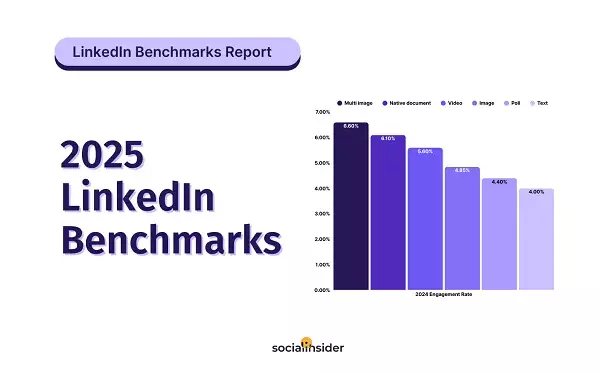As the digital age continues to transform how professionals connect, LinkedIn is seizing its opportunity to supplant competitors in the realm of business social media. Following recent upheavals at Twitter, now rebranded as X, many brands are re-evaluating their social strategies and are increasingly relying on LinkedIn. Unlike its fluctuating counterparts, LinkedIn is steadfast in its purpose—to facilitate professional connections and knowledge sharing. This platform’s stability and growing engagement metrics suggest that it is not just surviving; it is thriving. With a treasure trove of insights provided by platforms like Socialinsider, brands should aggressively leverage LinkedIn to their advantage.
The Data Tells the Story
Recent findings from Socialinsider’s thorough analysis of about one million LinkedIn posts, derived from 9,000 company pages, shine a light on which content formats are working best. The results are crystal clear: carousel posts dominate in terms of engagement. This contradicts some claims from LinkedIn itself, which touts video content as generating significantly more interactions. However, it is essential to consider the nuances—LinkedIn’s data includes personal pages, while Socialinsider only highlights company pages. This distinction is pivotal; brands must align their strategies with the correct audience metrics if they are to maximize interactions.
The intriguing conflict between the two data sources raises questions about the nature of content that inspires engagement. Is it merely the format, or are there deeper psychological factors at play? One must wonder if LinkedIn’s emphasis on video is aimed more at encouraging user-generated content rather than fostering the primarily visual storytelling that carousel posts provide.
Understanding Engagement Through Successful Formats
Digging deeper, the analysis presents a hierarchy of engagement formats: carousel posts, document attachments, and videos are the clear front runners. This palette of formats generates the most interaction, yet polls take the crown for impressions. Companies hoping to etch their footprints on LinkedIn must therefore craft an informed strategy around these specific content types. However, it’s important to remember that engagement hinges not solely on format but also on relevance and audience connection.
For brands, this translates to a need for a multifaceted approach. Relying too heavily on one format can dilute the message and lessen engagement. The key lies in crafting a balanced content strategy that not only emphasizes these top-performing formats but also considers what truly resonates with the audience.
The Untapped Power of Smaller Pages
Interestingly, smaller company pages are reportedly witnessing remarkable follower growth, a phenomenon that suggests existing brands might be missing out on something crucial. This trend urges established businesses to reconsider their strategies. Shouldn’t they focus on engaging niche audiences or exploring unique storytelling methods that smaller brands have capitalized on?
As image posts gain traction—partly influenced by recent changes to LinkedIn’s link preview format—brands must reevaluate their priorities. It seems that a well-placed image can do wonders for visibility, especially when optimal sizing and context are employed. The shift toward visually striking images could propel companies to reconsider how they present their links. Rather than prioritizing intricate link previews, why not create highly optimized image content that captures attention?
Strategic Content Development: Beyond Formats
Yet even amid these revelations, it remains crucial to understand that diving headfirst into posting any of these formats won’t guarantee success. The quality and relevance of the content is paramount. Flawless execution coupled with a clear understanding of audience pain points and interests can transform a simple post into a compelling story—one that audiences cannot resist engaging with.
This calls for extensive research and planning. Audience segments must be analyzed, and the evolving trends within professional networking should be meticulously monitored. Furthermore, incorporating feedback into future content plans could refine approaches even further, turning a reactive strategy into proactive engagement.
In essence, LinkedIn represents more than just another social media outlet—it’s a formidable platform for professional engagement and influence. If brands wish to unlock their full potential on this platform, they must not only understand its metrics but also deeply connect with their audiences through quality content. The game is on, and those who adapt quickly will undoubtedly lead the charge in LinkedIn engagement.


Leave a Reply